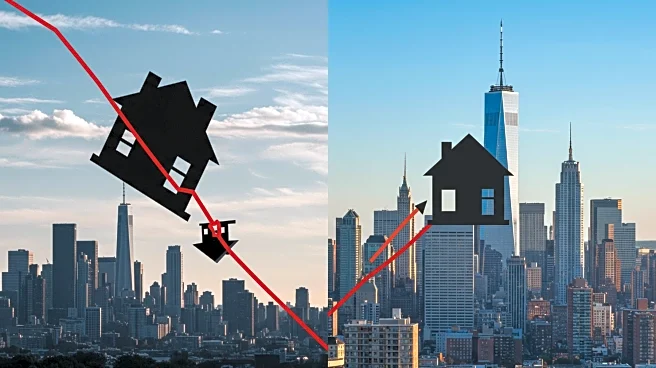What's Happening?
The U.S. housing market is experiencing a downturn, particularly affecting newly built homes in the South and West. Traditionally, new constructions have been priced higher due to modern amenities and rising material costs. However, recent data from Realtor.com indicates a shift, with median listing prices for new builds dropping year-over-year in 30 major metro areas. Little Rock, Arkansas, recorded the largest decline at 15.6%, followed by Austin, Texas, at 8.5%, and Wichita, Kansas, at 7.9%. This trend is attributed to elevated inventory levels in these fast-growing regions, which were previously at the center of a pandemic-era housing boom.
Why It's Important?
The decline in new home prices signals a significant shift in the housing market dynamics, impacting both buyers and sellers. For buyers, the market is becoming more balanced, offering potential opportunities to purchase homes at reduced prices. However, sellers face increased pressure to offer concessions, such as covering closing costs or mortgage-rate buydowns, to attract buyers. This trend could lead to a more competitive market environment, particularly in regions that experienced rapid growth during the pandemic. The cooling demand in cities like Austin and Miami highlights the challenges developers face in maintaining affordability and attracting buyers.
What's Next?
As the housing market continues to rebalance, stakeholders such as developers and real estate agents may need to adjust strategies to navigate the changing landscape. Sellers might increasingly offer incentives to close deals, while buyers could benefit from more favorable conditions. The ongoing adjustments in the market could lead to further price reductions, especially in areas with high inventory levels. Monitoring these trends will be crucial for understanding the long-term implications for the housing sector.
Beyond the Headlines
The housing market's shift could have broader economic implications, affecting local economies in regions heavily reliant on real estate development. The decline in new home prices might influence construction activity, employment in the sector, and related industries. Additionally, the trend could impact urban planning and development strategies, as cities reassess growth projections and infrastructure needs.












